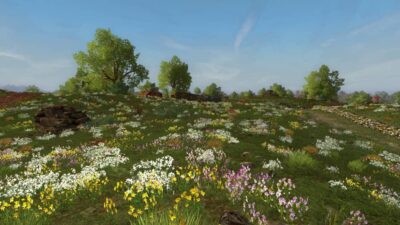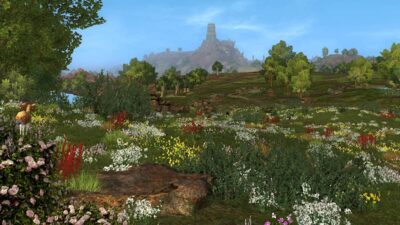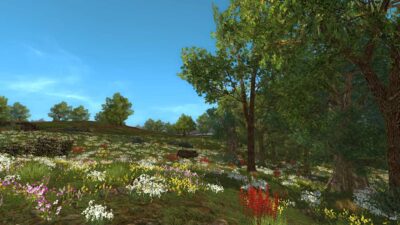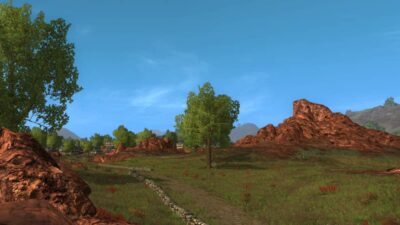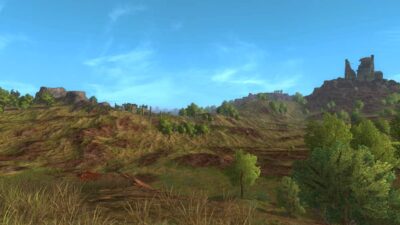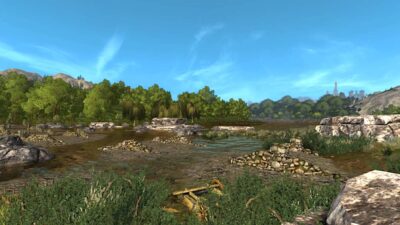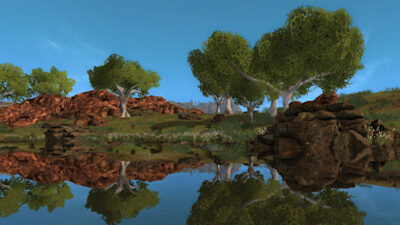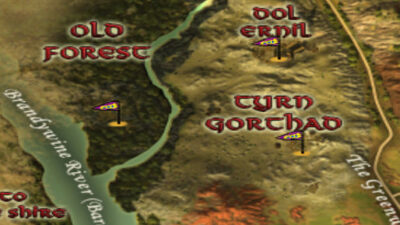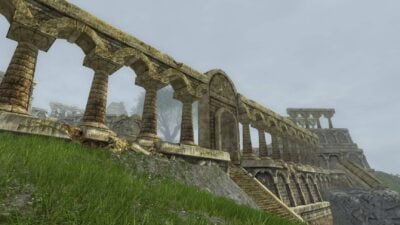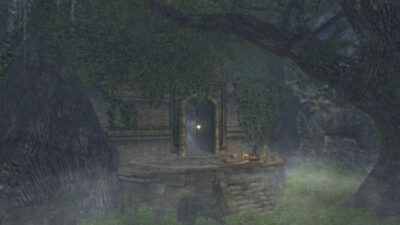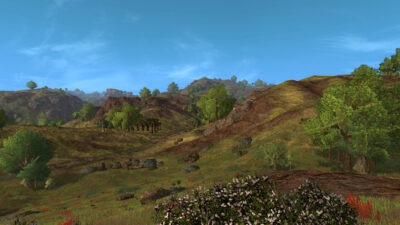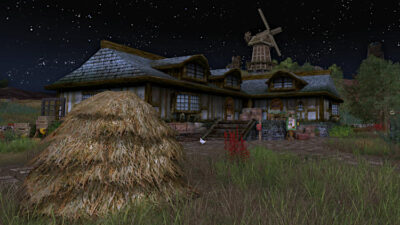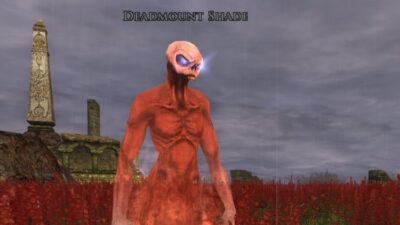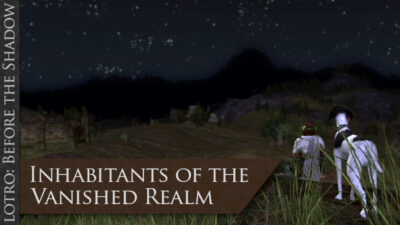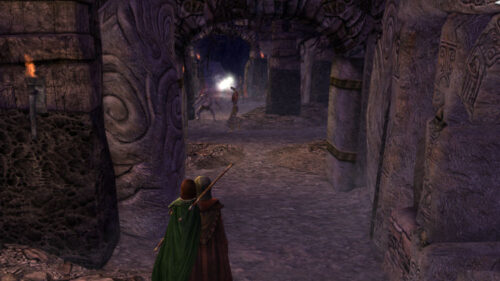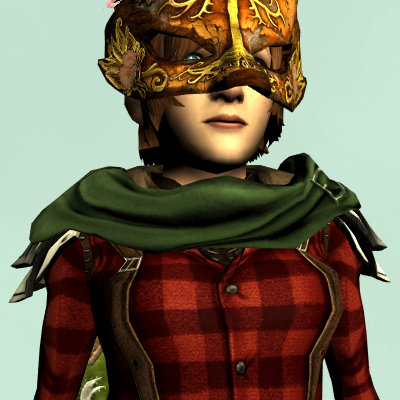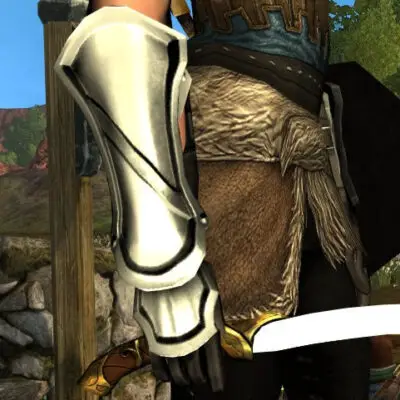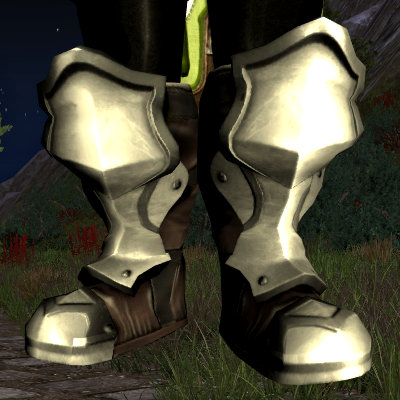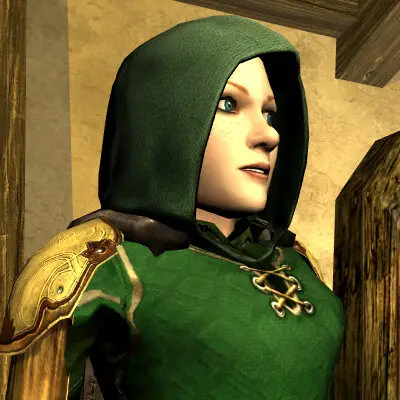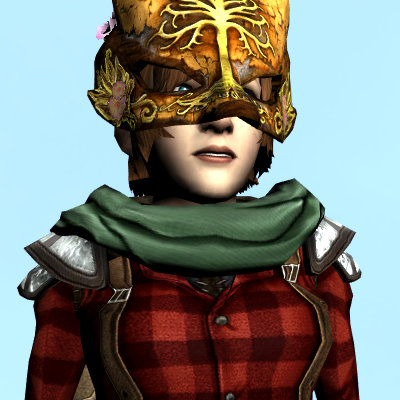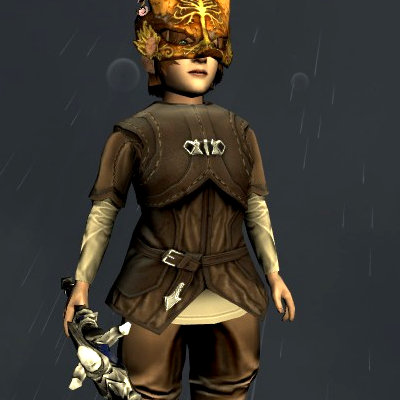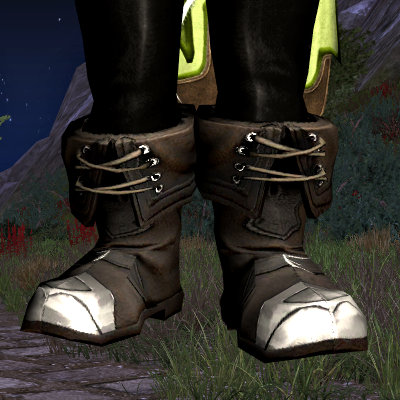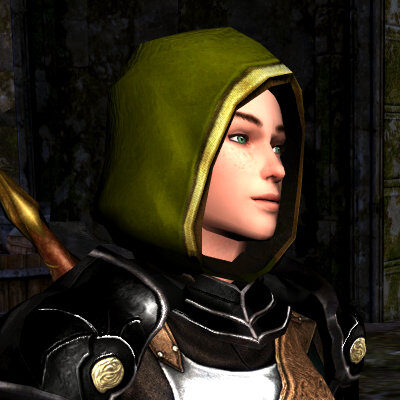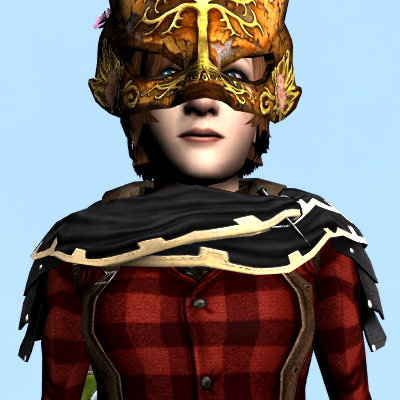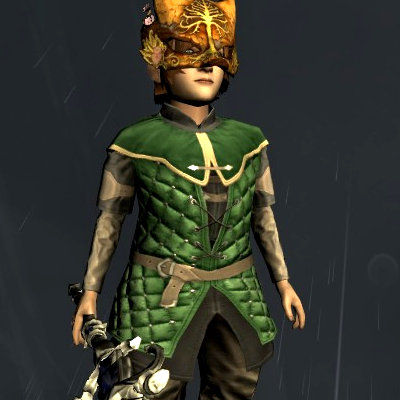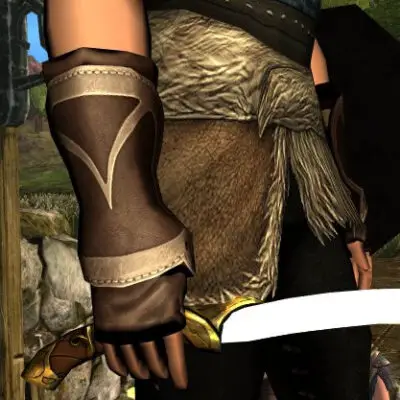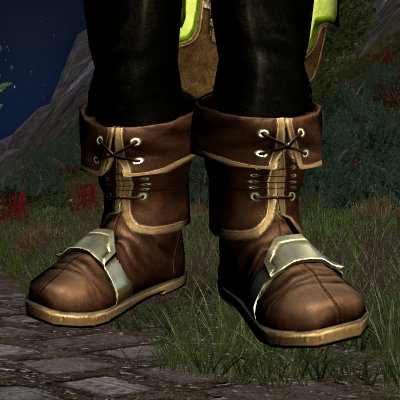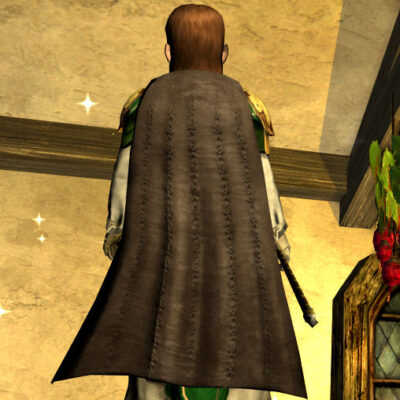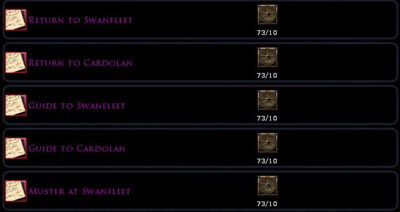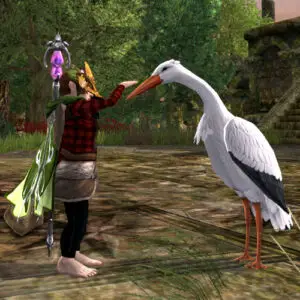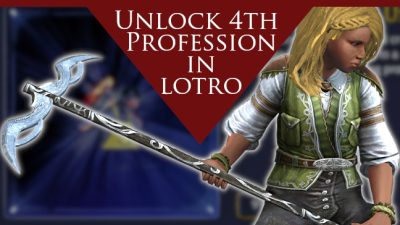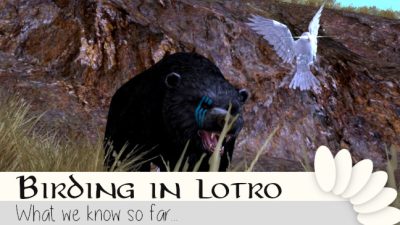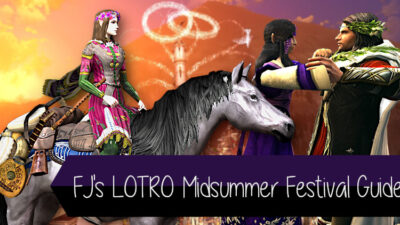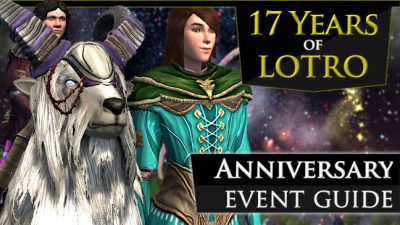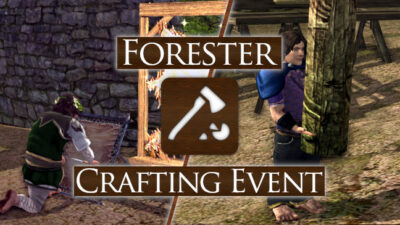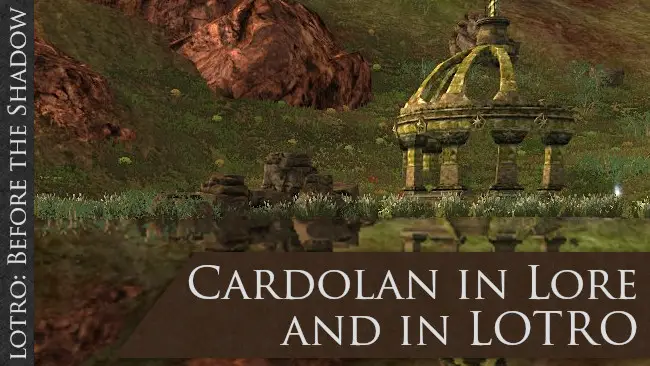
Post Sections ⇅
- Geography of Cardolan
- History of Cardolan
- People of Cardolan
- Regional Currency
- Cardolan Deeds
- Challenging Content
- Gear/Cosmetics
- Cardolan Reputation Vendor
- Crafting and Gathering
- Further Reading
Cardolan in The Lord of the Rings Online is one of the two region introduced in its mini-expansion “Before the Shadow”. Alongside Swanfleet, these regions became a new way to begin adventuring in LOTRO from Level 1 through to Level 30-ish. As the “base pack” is called Shadows of Angmar, the story is designed to begin to draw you in as that Shadow rises.
But Cardolan is in itself also a major part of LOTR lore in its own right, having been one of the three great Dúnedain Kingdoms in the Third Age. I wanted to dive into the lore here in more depth, but also keep it in context of what you LOTRO players expect when you venture here.
Let’s go.
Geography of Cardolan
Borders
- The Old Forest (all of it, that is)
- Part of the southern Lone-lands, including Amon Sûl (Weathertop) as Cardolan claimed the Palantír there.
- The portion of Bree-land which lies South of Bree itself.
Landscape
For one region, Cardolan is exceedingly varied in the types of landscape features to be found here.
Rich and Fertile
From Tharbad it is initially slightly undulating ground, rich in plantlife and grasses. I’ve read elsewhere that the region used to be a fertile area, and certainly it has that feel to it.
You can also find some large ponds (or small lakes, take your pick) on the lower-lying areas. Just a note that, what looks like a lake on the map, may well be marshy or at least more reedy than you might expect.
Hills and Crags
Much of the region is hilly, and some in Cardolan do go pretty high, enabling you to get some great views from atop them in LOTRO. This is especially true of the hill Caranost is sat on.
Trees
The main wooded portion is, of course, the Old Forest. In LOTRO’s Cardolan region, this is just called the Southern Old Forest, though no such divide actually existed.
However, because it is rich in nature, trees are not lacking in other areas either. This is especially true in certain areas like Sedgemead and South Downs, where you will find clusters of trees.
Ruddymore Red Rocks
In Ruddymore, the landscape changes again with lower-lying rocks and crags. These have been portrayed in LOTRO as being a reddy colour.
This is because a possible of the name “Cardolan” is “red hill land8” but this was never confirmed by the Tolkiens.
South Downs
The South Downs in the North of the region, and mostly border the Lone-lands. Fewer trees live here, though some do. But the area is of rolling hills with ruins dotted here and there.
Tyrn Gorthad
And lastly, there’s Tyrn Gorthad, the Barrow-Downs. By definition of people being buried in “mounds”, these are hilly and grassy. A permanent gloom and mist surrounds the place since evil stirs here once again.
Rivers
In a way, the rivers form much of the border of Cardolan:
Brandywine/Baranduin
On the western edge lies the Brandywine, where it borders the Shire. It is at a small cottage here that LOTRO depict the Nazgûl as they prepare to search the Shire for “Baggins” and the whereabouts of the One Ring.
This shot as at Sarn Ford.
Mitheithel/Hoarwell
I do love it when LOTRO have names in multiple languages. It shows how many cultures have affected the naming conventions over the years. This river heads North-East, through the Angle of Mitheithel and into the Trollshaws where it becomes, I believe, part of the Bruinen.
Greyflood/Gwathló
The Greyflood marks the border between Cardolan and Enedwaith. If you happen to have started your LOTRO adventures in Before the Shadow, be careful you do not stray into Enedwaith. I did that by accident and, with that region being for L60+ characters, it did not end well!
Wylvenclove Lake
While some low-lying lakes are more marshy, the one at Wylvenclove is beautiful!Connected Regions
One thing LOTRO has been doing with its mini-expansions or questpacks is filling in the gaps between regions. The Angle of Mitheithel was a prime example of that. But the same is true here, too.
Some of the regions share rivers (or one becomes another), and others are land borders.
While trying not to repeat what I’ve already said, Cardolan borders the currently-accessible regions of:
- Bree-land: including the Old Forest, the Barrow-downs and the Greenway1
- The Shire, especially via Sarn Ford.
- The Lone-lands: The road North ultimately leads back to the Forsaken Inn. But if you keep going North through the South Downs, you’ll pop in near Harloeg. So Ost Haer or Nindor from the Explorer of the Lone-lands Deed.
- The Trollshaws
- The Angle of Mitheithel: I want to say South/South-West of Tornhad, but I’ll test that theory soon!
- Enedwaith
History of Cardolan
But it is the history and lore of this region that makes it what it is. Firstly in official lore, being a former Dúnedan kingdom and secondly in LOTRO’s Shadows of Angmar story.
A Realm Divided
After the death of Eärendur, king of Arnor, his sons divided the realm into three separate kindoms: Rhudaur, Arthedain and Cardolan. The first king of Cardolan was the second son of Eärendur2. But it wasn’t that simple – things never are, are they? Although there were borders, certain areas were in near-constant dispute, especially the Weather-hills and the fortress of Amon Sûl, where the northern Palantír had been kept3.
But these realms were not divided merely over borders, but strife between the three continued for years, diminishing the Dúnedain as a result. War and division would ultimately be its destroyers.
The Shadow of Angmar
It was during the time of King Malvegil of Arthedain that Angmar’s strength began to grow under the leadership of the Witch-King4. Orcs had already been harrying the land of Cardolan even before Angmar’s founding in TA1300.
Cardolan Allies with Arthedain
Because the line of Kings had failed in Cardolan and Rhudaur, the latter kingdom had ended up being ruled by hillmen who were allied with Angmar. Thus, in one of the three Dúnedain kingdoms, the enemy had already gained a foothold.
When Argeleb I claimed lordship over all of Arnor, Rhudaur naturally resisted this claim, with Cardolan likely accepting it. This led to battles against the joint forces of Rhudaur and Angmar, resulting in the death of the Prince of Cardolan in TA13565.
Linking History with LOTRO
Lore of the Cardolan Prince
The fact that this region had princes rather than kings at that time is what gives rise to the LOTRO Deed, Lore of the Cardolan Prince
. The tooltips on the items you gather refer to the fall of the kingdom, the Dark Plague and the arrival of Wights and evil spirits of Angmar at the Barrow-Downs.
Cardolan Trinkets
The Men of Bree Reputation items in LOTRO, such as Cardolan Trinkets
are often found after defeating Wights and spirits in the Barrow-Downs. As this area was claimed by Cardolan and many Dúnedain buried here, it is not surprising that such treasures may be found.
That they are reputation items means the historians and archeologists are probably grateful you’ve salvaged a thread of history even many years later.
The Fall of Cardolan
The alliance of Cardolan and Arthedain against Angmar and Rhudaur lasted for quite some time6.
But wars of attrition always favour the strongest or the one with the most resources9 – with the attackers often prevailing. In TA1409, Angmar’s forces destroyed Cardolan, with the remnant of its people trapped in Tyrn Gorthad, which would become part of the sprawling Barrow-downs.
LOTRO Deeds Near Tyrn Gorthad
Tyrn Gorthad in LOTRO
The Great Plague
As if having their nation ravaged and destroyed were insufficient, much of the remnant of Cardolan’s people were wiped out by the Great Plague of c. TA1636. LOTRO-Wiki![]() has an excellent summary of this event and I have no wish to recreate it. That said, you do find it referred to in LOTRO.
has an excellent summary of this event and I have no wish to recreate it. That said, you do find it referred to in LOTRO.
References to the Plague in LOTRO
This has long been referenced in LOTRO. For example the Level 19 Bree-land quest “Treasures of Cardolan![]() ” includes the dialogue quote:
” includes the dialogue quote:
The lore-fragments you brought me mention a fortress named Ost Gorthad. The Men of Cardolan took many of those who fell sick to the Plague there.
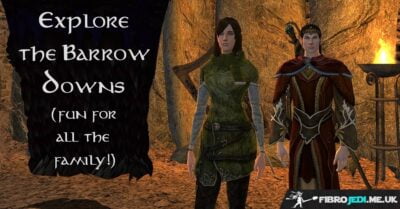
The Barrow-Downs Deed speaks of the barrows being the usual burying grounds for the Dúnedain of Cardolan until the Great Plague7.
Within its crumbling walls, the countless dead from the ravaging of Cardolan, and later, the Great Plague were laid to rest in mass burials;
The Great Plague was so widespread that even the Lost Lore of Gorgoroth (in this case Agarnaith![]() ) speaks of it.
) speaks of it.
How LOTRO Reflects LOTR Lore Here
From the moment you start playing The Lord of the Rings Online, it is clear the team at SSG love their lore. From Hobbit culture, to the nameless horrors of Moria, to the scene at Mount Doom, LOTRO do not alter what the lore says. The same is true in Cardolan which, given its rich history, is really important.
Here are a few examples of how they achieved it:
Open Countryside
Due to the war with, and destruction by, Angmar – and the resulting plague, Cardolan was left largely uninhabited.
The area of Tyrn Gorthad was so infested with wights that Tolkien Gateway mentions![]() that the king of Arthedain attempted to reoccupy it, but the people’s fear of the wights effectively prevented this.
that the king of Arthedain attempted to reoccupy it, but the people’s fear of the wights effectively prevented this.
Consequently, much of Cardolan in LOTRO is open countryside, broken up by ruins of the former kingdom.
Low Population
In The Lord of the Rings Online‘s interpretation of Cardolan, there are few “safe havens”. The only town worthy of the name is Herne, but it isn’t walled off – and in one Before the Shadow quest, wights threaten it.
The other locations you can find pockets of free people are: Scurloc Farm, Sírlond, Gerwyn’s Convoy and Stonecrop Encampment. But LOTRO have fairly represented the low populations remaining.
Wights Rising Again
Whenever the Dead begin to stir, evil is on the move. Before the Shadow leads to the Shadow’s rise. Angmar is active once again.
While Tyrn Gorthad is the most prominant location, the simple tombs of Gond Orchal are not immune to the Shadow’s influence.
Take Your Time to Soak it In
In terms of its history, LOTRO have done an amazing job of making this feel so lore-rich. I don’t think I could rush this region if I tried. There is a lot to take in. But that’s a good thing! Don’t see Cardolan, or any other region for that matter, as “just another region to complete”. Enjoy the Tolkien-researched and Tolkien-inspired quests, locations and items.
People of Cardolan
- Stonecrop Encampment: folks from Bree-land who thought to travel to Cardolan to start a settlement.
- Herne: is the only actual town in the whole region. You can find all your main services and vendors here, but you will find trust in short supply.
- Sírlond: a camp on the edge of Caranost. A small group of Dúnedain and Elves are working in an attempt to deal with the Orcs who have made Caranost their stronghold.
- Scurloc Farm: still being held by its owners, but also providing refuge for the family and workers of the nearby Hove Farm, currently overrun by Goblins.
- Gerwyn’s Convoy: These caravans were transporting a group from Bree-land who wanted to settle in Cardolan. But they were attacked en route, and now they’ve realised the Dead lurk near too.
- Sarn Ford: It is at Sarn Ford that the Nazgûl cross into the Shire. The nearby Ranger Rothavron has quests relating to that event.
How They’re Impacted by History
Those that have attempted to make a home or permanent camp here know they live in a difficult and sometimes dangerous region.
The folk of Gerwyn’s Convoy are camped near to where the Dead roam, which instills fear.
Enemies such as Orcs and Goblins were those that appeared prior to Angmar’s destruction of Cardolan. That they occupy Caranost, Tharbad and Haudh Nírui means they are dealing with not only aggressive enemies, but uncertainty about the future.
Unity Between Peoples
Yet, despite this, Dúnedain and those of the Race of Man, Elves and others can be found working towards common purposes here. It’s a reminder to them that it was division that led to downfall.
I wish I could remember the quest, but I believe it was an Elf that mentions trying to stop history repeating itself. We could all use a bit of the wisdom that comes from learning from the mistakes of others.
Regional Currency
In LOTRO, quests and deeds grant ![]() Iron Coins of Cardolan. These can then be used to barter from the Cardolan Reputation Vendor for a range of rewards.
Iron Coins of Cardolan. These can then be used to barter from the Cardolan Reputation Vendor for a range of rewards.
Cardolan Deeds
Speaking more practically, what Cardolan deeds are available in LOTRO? Well, it’s the usual assortment of quests, exploration and slayer – as well as any deeds relating to increases in reputation.
Tales of Cardolan
As I’ve spoken (at length) about, there is a deep history in this region. But the great thing is you can learn it in bite-sized chunks through quests.
The Tales of Cardolan![]() invites you to undertake a lot of quests in the area – but don’t just “accept and complete” when there’s so much care and attention to detail in each quest and dialogue!
invites you to undertake a lot of quests in the area – but don’t just “accept and complete” when there’s so much care and attention to detail in each quest and dialogue!
How Many Quests?
The numbers here are the total number of regional quests, not the number for that stage!
- First Stage: 20
- Advanced: 40
- Final: 70
Slayer of Cardolan
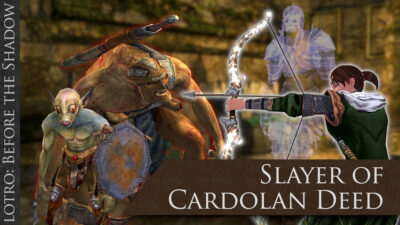
Stand with the remnant population and help deal with some of the ongoing threats they face.
In the Slayer of Cardolan Deed, you’ll take on Orcs, Goblins, Half-Orcs and the Dead.
See your efforts as a way of telling the Enemy that their threats will be resisted by the Free Peoples.
Explorer of Cardolan
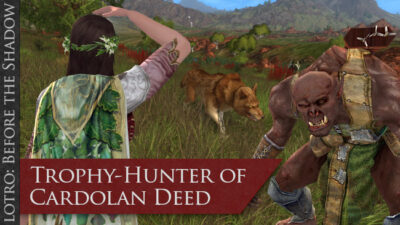
The exploration deed is broken down into various parts. The most interesting one is the Ravaging deed, which you can only complete by finishing a questline. Only once you’re through that can you acquire the Scroll of Luilloth item.
LOTRO Points for Deeds
As with regions that LOTRO have introduced over the last couple of years, not every deed grants ![]() LOTRO Points. The second stage deeds (such as the Advanced Slayer of Cardolan Deed) usually do, however.
LOTRO Points. The second stage deeds (such as the Advanced Slayer of Cardolan Deed) usually do, however.
Challenging Content
I can only provide a small note about the challenging content in Cardolan. I’m not at endgame level and, because my main character is a Guardian, there’s no way I’m going to suddenly tank instances when I never have!
However, if challenge is your thing, you have:
- Sarch Vorn:
The Black Grave instance is scalable and, from what I’ve seen in World Chat, regularly grouped for. It also has a Solo/Duo option.
is scalable and, from what I’ve seen in World Chat, regularly grouped for. It also has a Solo/Duo option. - Delvings and Missions:
There are Delving Rewards vendors at Stonecrop Encampment, Herne and Gerwyn’s Convoy. If you are L140 and enjoy making missions harder for greater rewards, then stop by Cardolan from time-to-time.
Gear/Cosmetics
While I cannot comment on gear or cosmetics from Sarch Vorn, I can say that some of the quest rewards in Before the Shadow are new and look really good.
This makes it different to the other starter regions, where it’s all…how to say… “not yet brought up to LOTRO’s current standards”. Admittedly, some items are still in that group, but not all.
Now I have pictures for as many as I remembered to screenshot, I’ve grouped them by their set name. Enjoy.
Engraved Plated Set
Salvaged Elven-Made Set
Salvaged Elven-Made Leather Hood
Quests:
A Long Way from Gondor![]() and
and
Missus Good-heart![]()
Salvaged Elven-Made Leather Shoulderpads
Salvaged Elven-Made Leather Boots
Elven-Etched/Stitched Set
Cloaks
Note: the chestpieces come from the Doom of Sarch Vorn. This is the quest chain that also leads to the Scroll of Luilloth, part of The Ravaging of Cardolan Deed.
It took me a while to screenshot these – mostly because I’ve been writing guides for you folk! And I get distracted by LOTRO events – which is a good thing.
Cosmetics Like Sarch Vorn
When I shared a recent find for quest cosmetics in Cardolan, @MinstrelbyNight caught my attention. She has produced an easy-to-follow post on getting Before the Shadow cosmetics that are similar to those from the Sarch Vorn instance.
Cardolan Reputation Vendor
Where is the Cardolan Rep Vendor?
You can find them at Sírlond, which is the eastern portion of Caranost(deed link).
Types of Rewards
Travel Skills
The usual assortment of Hunter Travel Guides, Warden Musters and “Return To” skills.Potions
If you don’t craft potions and haven’t picked up any from anywhere else in a while, various potions and salves are on offer.
Housing Items
The vast majority of the rewards for the Dúnedain of Cardolan faction is decorations. This includes housing music.
See Déco du Milieu![]() for previews.
for previews.
They also have audio previews of the music over there too.
Probably the only disappointment I had with Cardolan and Before the Shadow in general is the lack of “pure” outfit cosmetics. The same was true of Yondershire.
But, remember to do all the side-quests as there are some Gear Cosmetics from quest rewards.
You can also pick up a variety of Level 140 Gear. However, note that these are in exchange for ![]() Embers of Enchantment, rather than
Embers of Enchantment, rather than ![]() Iron Coins.
Iron Coins.
Crafting and Gathering
While crafting facilities are mostly in Herne (Farmland and a Workbench can be found at Scurloc Farm), you can still gather plenty materials in the Cardolan Region.
The tiers provided for are Journeyman and Expert.
Crafting is Optional
While you can learn crafting in Before the Shadow, in terms of getting through the content, your quest rewards are more than sufficient. Just make sure to save any items you like the appearance of for your wardrobe.
Further Reading
So much good can be said about the LOTRO community and the wider Tolkien community too. I wanted to dive deeper into the lore of Cardolan. So I ended up on a variety of sites to help with this, while also doing my best to provide something new and useful.
But my thanks go to these sites (in no particular order):
- https://lotro-wiki.com/index.php/Cardolan

- https://lotr.fandom.com/wiki/Cardolan

- https://lotrojournal.wordpress.com/a-history-of-the-kingdom-of-arnor/

- https://tolkiengateway.net/wiki/Cardolan

- https://www.glyphweb.com/arda/c/cardolan.php

Conclusion: Dive into Cardolan in LOTRO – You Won’t Be Disappointed!
The Cardolan region of Before the Shadow is a wide landscape of hills, ponds and ruins. With friendly people being few, and threats being many, LOTRO have captured the legacy of Angmar’s decimation of this former kingdom.
Cardolan offers a rich experience – firstly in terms of the visuals LOTRO have crafted for us, and secondly in the detailed, yet accessible way it presents lore and history. There are many interesting characters to speak to, ruins to explore and things to do – even if you’re here as an endgamer. So start Before the Shadow, or, if you’re a higher level, pick up the sidequests. Whatever your approach, enjoy it and remember to “Stop and Stare”. Have fun!
Footnotes/References
- https://tolkiengateway.net/wiki/Cardolan#Description (Return ↑)
- I could not tie down, for sure which son it was. One site
 even says “history does not record” it. LOTRO-Wiki
even says “history does not record” it. LOTRO-Wiki says it was Tarondor II, though I’m struggling to find an external source to back that up. (Return ↑)
says it was Tarondor II, though I’m struggling to find an external source to back that up. (Return ↑) - https://tolkiengateway.net/wiki/Cardolan#History (Return ↑)
- https://lotrojournal.wordpress.com/a-history-of-the-kingdom-of-arnor/ (Return ↑)
- While the site this was referenced was TolkienGateway, their reference was:
J.R.R. Tolkien, The Lord of the Rings, Appendix B, “The Third Age”, entry for the year 1356, p. 1086 (Return ↑) - Fandom Wiki
 says it was for “over fifty years”. (Return ↑)
says it was for “over fifty years”. (Return ↑) - This is taken from the deed’s tooltip, quoted over on LOTRO-Wiki
 (emphasis mine)
(emphasis mine) - https://lotr.fandom.com/wiki/Cardolan#Etymology, with another possible translation from Noldorin, as well as Sindarin ones at https://tolkiengateway.net/wiki/Cardolan#Etymology (Return ↑)
- https://simple.wikipedia.org/wiki/Attrition_warfare (Return ↑)
